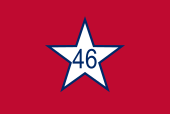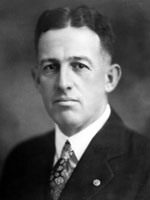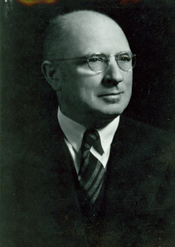
The Legislature of the State of Oklahoma is the state legislative branch of the U.S. state of Oklahoma. The Oklahoma House of Representatives and Oklahoma Senate are the two houses that make up the bicameral state legislature. There are 101 state representatives, each serving a two-year term, and 48 state senators, who serve four-year terms that are staggered so only half of the Oklahoma Senate districts are eligible in each election cycle. Legislators are elected directly by the people from single member districts of equal population. The Oklahoma Legislature meets annually in the Oklahoma State Capitol in Oklahoma City.

The Oklahoma House of Representatives is the lower house of the legislature of the U.S. state of Oklahoma. Its members introduce and vote on bills and resolutions, provide legislative oversight for state agencies, and help to craft the state's budget. The upper house of the Oklahoma Legislature is the Oklahoma Senate.

The Oklahoma Senate is the upper house of the two houses of the Legislature of Oklahoma, the other being the Oklahoma House of Representatives. The total number of senators is set at 48 by the Oklahoma Constitution.

The Oklahoma Republican Party is an Oklahoma political party affiliated with the Republican Party. Along with the Oklahoma Democratic Party, it is one of the two major parties in the state.

The Forty-seventh Oklahoma Legislature was a meeting of the legislative branch of the government of Oklahoma, composed of the Senate and the House of Representatives. It met in Oklahoma City from January 5, 1999, to January 2, 2001, during the first two years of the second term of Governor Frank Keating.

The Fortieth Oklahoma Legislature was a meeting of the legislative branch of the government of Oklahoma, composed of the Senate and the House of Representatives. It met in Oklahoma City from January 8, 1985, to January 6, 1987, during the term of Governor George Nigh. It was marked by the enactment of the Executive Branch Reform Act of 1986 and the establishment of the franchise tax in Oklahoma.

The Thirty-ninth Oklahoma Legislature was a meeting of the legislative branch of the government of Oklahoma, composed of the Senate and the House of Representatives. It met in Oklahoma City from January 4, 1983, to January 8, 1985, during the term of Governor George Nigh. It was marked by the establishment of the Oklahoma School of Science and Mathematics.

The Thirty-eighth Oklahoma Legislature was a meeting of the legislative branch of the government of Oklahoma, composed of the Senate and the House of Representatives. It met in Oklahoma City from January 6 to July 20, 1981, from August 31 to September 4, 1981, and from January 5 to July 12, 1982, during the term of Governor George Nigh. After the legislative council was eliminated in 1980, the Oklahoma House of Representatives added research and fiscal divisions.

The Thirty-seventh Oklahoma Legislature was a meeting of the legislative branch of the government of Oklahoma, composed of the Senate and the House of Representatives. It met in Oklahoma City from January 2 to July 2, 1979, from January 8 to June 16, 1980, and from July 7 to 11, 1980, during the term of Governor George Nigh.

The Thirtieth Oklahoma Legislature was a meeting of the legislative branch of the government of Oklahoma, composed of the Oklahoma Senate and the Oklahoma House of Representatives. The state legislature met in regular session at the Oklahoma State Capitol in Oklahoma City from January 5 to July 22, 1965, during the first term of Governor Henry Bellmon. It was the last time the state legislature met only once every two years, and the first time since A. C. Hamlin left office in 1910 that the legislature included black members.

The Sixteenth Oklahoma Legislature was a meeting of the legislative branch of the government of Oklahoma, composed of the Oklahoma Senate and the Oklahoma House of Representatives. The state legislature met November 24, 1936, to May 11, 1937, during the term of Governor E.W. Marland.

The First Oklahoma Legislature was the first meeting of the legislative branch of the government of Oklahoma, composed of the Oklahoma Senate and the Oklahoma House of Representatives. The meeting took place from December 2, 1907, to May 26, 1908, in the Guthrie City Hall Building during the first year of the only term of Governor Charles Haskell.

The Fourth Oklahoma Legislature was a meeting of the legislative branch of the government of Oklahoma, composed of the Oklahoma Senate and the Oklahoma House of Representatives. The state legislature met in the India White Temple in Oklahoma City, in regular session from January 7 to March 17, 1913, and in special session from March 18 to July 5, 1913, during the term of Governor Lee Cruce.

The Fifth Oklahoma Legislature was a meeting of the legislative branch of the government of Oklahoma, composed of the Oklahoma Senate and the Oklahoma House of Representatives. The state legislature met in Oklahoma City, in regular session from January 5 to March 23, 1915, and in special session from January 17 to February 22, 1916, during the first two years of the term of Governor Robert L. Williams. The legislature included six Socialists, who only served for a single term. The only bill sponsored by a Socialist that became Oklahoma law involved hunting. The 1916 special session was called after the U.S. Supreme Court struck down Oklahoma's Jim Crow law.

The Sixth Oklahoma Legislature was a meeting of the legislative branch of the government of Oklahoma, composed of the Oklahoma Senate and the Oklahoma House of Representatives. The state legislature met in Oklahoma City, in regular session from January 2 to March 16, 1917, during the third year of the term of Governor Robert L. Williams.

The Seventh Oklahoma Legislature was a meeting of the legislative branch of the government of Oklahoma, composed of the Oklahoma Senate and the Oklahoma House of Representatives. The Oklahoma State Capitol, which was completed on June 30, 1917, was now available to state legislators The building was completed on June 30, 1917. They met in regular session from January 7 to March 29, 1919, during the first year of the term of Governor James B.A. Robertson. Among the newly elected members of the Oklahoma House of Representatives was George B. Schwabe, who would soon serve as the first Republican Speaker of the Oklahoma House of Representatives.

The Ninth Oklahoma Legislature was a meeting of the legislative branch of the government of Oklahoma, composed of the Oklahoma Senate and the Oklahoma House of Representatives. The state legislature met in Oklahoma City, in regular session from January 2 to March 31, 1923, during the short term of Governor Jack C. Walton, and in two special sessions after his impeachment.

The Tenth Oklahoma Legislature was a meeting of the legislative branch of the government of Oklahoma, composed of the Oklahoma Senate and the Oklahoma House of Representatives. The state legislature met in Oklahoma City, in regular session from January 6 to March 28, 1925, during the term of Governor Martin Trapp.

The Twelfth Oklahoma Legislature was a meeting of the legislative branch of the government of Oklahoma, composed of the Oklahoma Senate and the Oklahoma House of Representatives. The state legislature met in Oklahoma City, in regular session from January 8 to March 30, 1929, and in one special session. State legislators successfully impeached Governor Henry S. Johnston during the legislative session.









